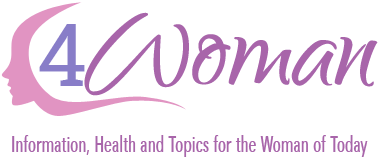Hormonal Acne Treatments: Therapy and Side Effects
Oral Contraceptives
Since 1960 oral contraceptives have been available and have since been modified to reduce the risk of their side effects. Most young couples prefer them for contraception. They prevent ovulation and make conditions difficult for a fertilized egg to implant on the uterus wall. Oral contraceptives are made up to progestin or of a combination of synthetic estrogen and progestin. Most contraceptive pills use ethinyl etradiol as estrogen which lowers the levels of luteinizing hormone and increases the sex hormone binding globulin. This lowers testosterone which reduces the drive of the oil glands that are responsible for the excess oil that causes acne.
Women with acne have a normal level of testosterone. However, those on oral contraceptives have an even lower level of testosterone. For some women when they take oral contraceptives their acne conditions improves because of the lower testosterone levels.
Progestin’s
Depending on the brand there are a number of different forms of progestin. They can be used as a constant dose throughout a woman’s cycle or a varying daily dose. Progestin is a hormone that have a different influence on the body depending on a persons molecular structure.
Some progestin’s have androgenic effects or they act like male hormones. Other progestin’s are anti-androgenic meaning they block the production or blocking of androgen receptors which allows your body to absorb and use androgen. The different actions of progestin can influence the number of side effects as well as the effect it has on your skin and acne. For acne purposes the pills that produce little or no androgens are best and those that block androgen production are ideal.
Acne Approved Hormone Therapy
Alesse has been shown to have the best anti-acne effect when compared to placebo. It has the lowest estrogen dose compared to other oral contraceptives which reduces the amount of cardiovascular side effects. In addition, weight gain doesn’t appear to be a side effect of this therapy. In studies using this therapy there was a forty-six percent reduction of inflammatory lesions compared to a twenty-nine percent reduction with placebos.
Ortho-Tricyclen is a combination of ethinyl estradiol and nor estimate in three increasing doses. In studies with women who had moderate acne, this therapy provided significant improvement over their acne conditions are six months. Ortho-Tricyclens are approved for acne treatment in the United States and Canada. After six months during studies fifty-three percent of women had completely cleared their acne.
Diane-35 is an anti-androgen hormonal therapy. Clinical studies have shown it can be used as an effective treatment for acne. It is currently only approved in Canada and Europe. In studies women have had one hundred percent improvement after eighteen months.
Side Effects
Hormone therapies are constantly being modified to reduce the side effects. However, before using them for acne there are some side effects you should be aware of. The common side effects of hormone therapy include nausea, vomiting, weight gain, bloating, breast tenderness, depression, mood swings and headaches. Rare side effects include blood clots, thromboembolism, stroke, retinal artery thrombosis, heart attacks, benign liver tumors, gallstones and increased blood pressure.
You should not take hormone therapy for your acne if you have any of the following history of coronary heart disease, high cholesterol, history of blood clots or stroke, late renal failure, jaundice, symptomatic heart valve disease, breast cancer, estrogen dependent cancer and smoking.
Hormone therapy may interact with some antibiotics including ampicillin, tetracycline, erythromycin and cotrimoxazole. There are definite side effects with rifampicin since it effects the estrogen levels. Taking laxatives may also effect the absorption of the contraceptives. As with any medication talk with your doctor before starting a hormone therapy while being on any medicines.

